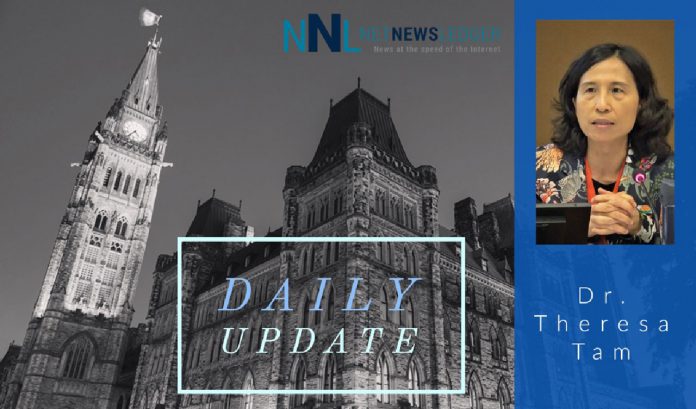OTTAWA – COVID -19 Update – As the resurgence of COVID-19 activity continues in Canada, we are tracking a range of epidemiological indicators to monitor where the disease is most active, where it is spreading and how it is impacting the health of Canadians and public health, laboratory and healthcare capacity. The following is a brief summary on national numbers and trends. As well, the latest release of national data on opioid and stimulant-related harms, discussed below, is a tragic reminder that there are broader health impacts associated with the pandemic.
Since the start of the pandemic, there have been 481,630 cases of COVID-19, including 13,799 deaths reported in Canada. Currently, there are 75,885 active cases across the country with an average of 6,614 new cases (Dec 10-16) being reported daily. It is important to remember that the vast majority of Canadians remain susceptible to COVID-19. This is why it is important for everyone to continue with individual precautions to protect ourselves, our families and our communities.
Provincial and territorial data indicate that an average of 3,096 people with COVID-19 were being treated in Canadian hospitals each day during the most recent 7-day period (Dec 10-16), including 629 of whom were being treated in intensive care units. During the same period, there were an average of over 116 COVID-19-related deaths reported daily. This situation is placing a heavy strain on local healthcare resources and impacts many Canadians, as important elective medical procedures are delayed or postponed.
While we continue to prepare the way for widespread and lasting control of COVID-19 through safe and effective vaccines, Canadians are also urged to continue with individual practices that keep us all safer. To do this, we need to continue to limit close contacts to only those in our immediate household and reduce in-person interactions to only essential errands and activities, while consistently maintaining key public health practices. Importantly, please follow the guidance of your local public health authorities. You can read my backgrounder to access more COVID-19 Information and Resources on ways to reduce the risks and protect yourself and others.
I would also like to highlight new national data released yesterday showing that the COVID-19 pandemic continues to worsen the overdose crisis. Between April and June 2020, there were 1,628 apparent opioid toxicity deaths across Canada, which is the highest number ever recorded in a single quarter since national level surveillance began in 2016. Hospitalisations and emergency service responses related to overdose events also increased during this period. Newly reported data show that approximately half of accidental opioid toxicity deaths also involved a stimulant like cocaine or methamphetamine. The overdose crisis is thus broader than opioids and encompasses a wider range of substances and issues related to substance use.
These devastating increases in overdose deaths and harms since the onset of the COVID-19 pandemic are due in part to the increasingly toxic and unpredictable illegal drug supply as supply chains have been disrupted by travel restrictions and border measures. A number of other factors have also likely contributed to a worsening of the overdose crisis during the COVID-19 pandemic. This includes increased feelings of isolation, stress and anxiety, which may lead to increased substance use, and limited availability or accessibility of services for people who use drugs, which may increase the risk that people will use drugs alone with no one there to help in the event of an overdose.
Yesterday, I, along with Dr. Jennifer Russell, New Brunswick’s Chief Medical Officer of Health, issued a joint statement as co-chairs of the Special Advisory Committee on the Epidemic of Opioid Overdoses. We must work together to curb this trend and save lives. It is vital that we recognize that substance use is a health and social issue, treat people who use drugs with dignity, compassion and respect, and help them get the right supports. This will require collective efforts to promote the accessibility of life saving harm reduction and treatment services, including access to medications as safer, pharmaceutical grade alternatives to the toxic illegal drug supply. You can visit canada.ca/opioids to learn more about recognizing the signs of an overdose, carrying naloxone, and changing the way you speak about substance use so others feel supported to reach out for help. These actions can help save lives, and are needed now more than ever due to the compounding public health impacts of the pandemic.
SOURCE Public Health Agency of Canada







